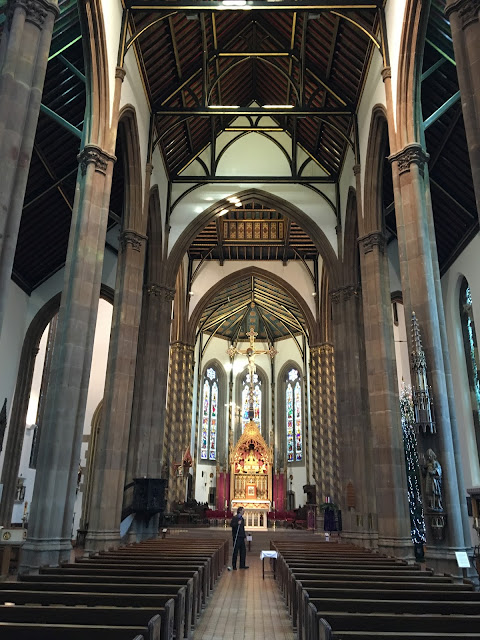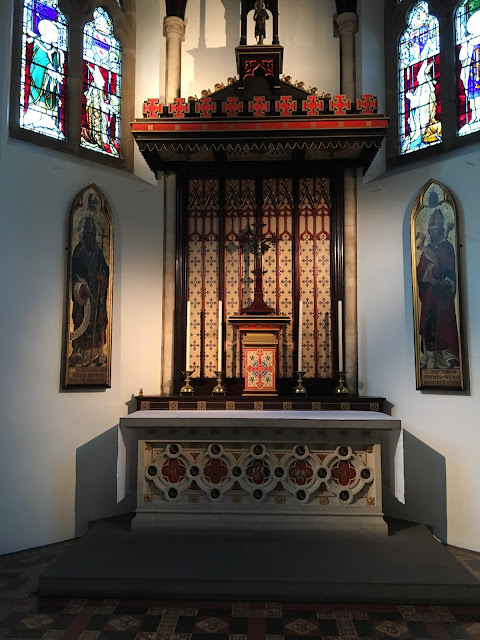The area around St Chad's Cathedral (1839-41, and early work by A W N Pugin) is a practical illustration of my point. Pugin designed St Chad's to fit into a tight, dense urban context of narrow streets; it was not designed to be seen, as now, across dual carriageways and open space. And that's why it looks oh-so-slightly disappointing. However in his materials - brick and sandstone - Pugin acknowledges the genius loci, though the design has a sort of North German feel to it as though it was designed not for a canal-side in the English Midlands but the side of the Baltic. Apart from the façade the outside is plain, even frugal: few mouldings and fewer buttresses. As I've said this partly from the fact that it was not really designed for public exposure, but also, I think, for the sake of economy. No English Medieval church of this scale would be quite so parsimonious. Still the mass and grouping of the liturgical east end is quite dramatic, verging on the sublime.
The interior is something else, a sort of hollowing out of the dense early Victorian city fabric to create a soaring numinous space in which to encounter the divine. The sandstone columns are very attenuated; the whole space has a sort of delicacy and fragility. Again Pugin works with incredible economy. There are great vast acres of flat wall surface, contrasting with flashes of rich detail. The fragility extends to the roofs, which have a thinness typical of his work. A medieval roof would be massive in comparison.
Again rapacious Modernity has been at work inside as well as out, denuding the interior of a number of Pugin's rich furnishings. The greatest loss is the Rood screen which is now happily in Holy Trinity, Reading (an Anglican church, though decidedly on the High side of things). Interestingly Pugin partly furnished St Chad's with architectural antiques such as the German Late Gothic/Early Renaissance pulpit.
The SW chapel is a very sensitive addition dating from the 1930s by S P Powell.
The SW chapel is a very sensitive addition dating from the 1930s by S P Powell.



















No comments:
Post a Comment